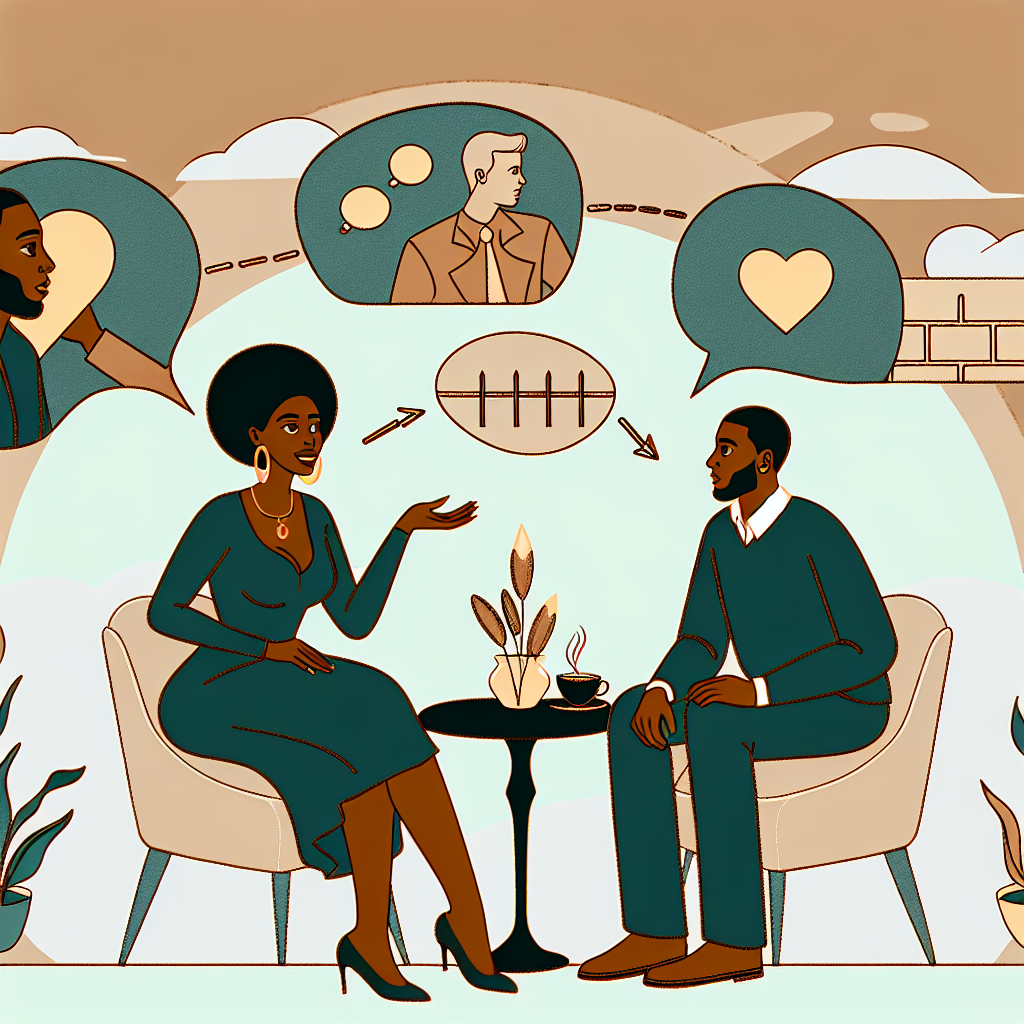Conflict Resolution Architecture: Designing Customized Dispute Systems for Your Relationship
Introduction: Why Every Couple Needs a Blueprint for Conflict
Conflict in relationships is not a matter of if, but when—and more importantly, how it’s managed. Whether you’re in your twenties and navigating early-stage romantic partnerships or in your seventies cherishing long-term companionship, conflict resolution remains a fundamental component of a healthy relationship. Yet, too many couples lack a structured system for handling disputes, often relying on reactive, emotionally driven interactions that increase distress and decrease relationship satisfaction.
Enter the concept of Conflict Resolution Architecture, a proactive, intentional, and customized approach to designing systems within your relationship to manage disagreements effectively. Think of it as building an internal navigation system for emotional storms: a personalized set of strategies, communicative norms, and emotional safety nets agreed upon by both partners.
So why is this concept so vital in today’s dating world? Many couples are navigating increasingly complex emotional terrain. Gender roles have evolved, cultural and political divides can influence relationships, and the pace of life often leaves little time for emotional reflection. Moreover, dating now spans across digital landscapes, long-distance connections, and intercultural arrangements—each with their unique friction points. The need to create bespoke systems tailored to your relationship’s particular needs has never been greater.
Building Blocks of a Relationship-Ready Conflict System: Scientific Foundations
The heart of Conflict Resolution Architecture lies in proven psychological and behavioral research. One of the standout voices in this space is Dr. John Gottman, creator of the famed “Four Horsemen of the Apocalypse” relationship model—criticism, contempt, defensiveness, and stonewalling. These behaviors are strong predictors of relationship breakdown. But Gottman also offers “antidotes,” such as gentle startups and personal responsibility, which when practiced, significantly raise the odds of relational success ([Gottman Institute](https://www.gottman.com)).
Another pillar is Nonviolent Communication (NVC), a model created by Marshall Rosenberg. NVC teaches couples to:
– Observe without evaluating
– Express genuine feelings
– Identify unmet needs
– Make non-demanding requests
This framework empowers couples to create emotional agreements built on empathy and mutual understanding. It forms the emotional *blueprints* critical to any dispute system’s structure ([Center for Nonviolent Communication](https://www.cnvc.org)).
Emotionally Focused Therapy (EFT)—recognized by the American Psychological Association—focuses on secure attachment, vulnerability, and responsiveness. EFT helps partners recognize interactional patterns and restructure them to foster emotional safety and closeness. Integrating EFT into your architectural design results in not just resolution, but deeper connection ([APA](https://www.apa.org)).
The Personalized Touch: Tailor-Made Systems for Real-Life Couples
No two relationships are the same—so your Conflict Resolution Architecture shouldn’t be either.
Using personality frameworks like the Myers-Briggs Type Indicator (MBTI) or Enneagram, couples can discover how their personality traits influence conflict behaviors. For instance:
– Introverts may need time to process before engaging in discussion.
– Extroverts may prefer rapid, real-time resolution.
– Some types prioritize harmony, while others value facts or fairness.
Designing your system around these insights minimizes miscommunication and maximizes emotional compatibility.
Another overlooked technique is the creation of a “Relationship Constitution”—a pre-agreed rulebook that outlines how to navigate emotionally charged moments. This can include:
– A safe “cool-off codeword” to pause escalating fights
– Designated conflict-free times or zones
– Agreements to revisit unresolved issues during calmer moments
– A commitment to enter therapy if conflicts repeat
The key element here is mutual agreement—your system works best when built together.
Emotional Tune-Ups: Check-Ins, Rituals, and Refreshers
Even the best-built system requires upkeep. Just like homes need renovations, your emotional communication frameworks also need routine care.
Research shows that emotional check-ins—where partners openly reflect on how they’re feeling—create deeper awareness and intimacy. Regular practices like:
– Monthly relationship reviews
– Shared journaling sessions
– “State of Us” dialogues
help detect small cracks before they turn into foundational issues. According to the *Journal of Marital and Family Therapy*, couples who implement such practices resolve issues faster and experience stronger emotional bonds ([Wachs & Cordova, 2007](https://onlinelibrary.wiley.com/doi/abs/10.1111/j.1752-0606.2007.00032.x)).
Life transitions like moving in together, becoming parents, or caring for aging family members should trigger a revisit and revision of your conflict architecture. These are perfect opportunities to refine rituals, communication styles, or boundaries to fit your evolving love.
Thrive Long-Term: From Reactive to Resilient Relationships
Designing a personalized, proactive conflict resolution system is not just a relationship luxury—it’s a relational necessity. From slowing down heated arguments to strengthening long-term emotional bonds, having your own Conflict Resolution Architecture shifts the dynamic from reactive chaos to planned connection.
The results? More compassion. More clarity. More longevity.
Whether you’re swiping on a dating app or celebrating your 40th anniversary, building a framework tailored to your unique relationship can elevate every interaction. Think of it as engineering for emotional sustainability.
References
– [Gottman Institute – The Four Horsemen](https://www.gottman.com)
– [Center for Nonviolent Communication](https://www.cnvc.org)
– [American Psychological Association – Emotionally Focused Therapy](https://www.apa.org)
– [Journal of Marital and Family Therapy – Relationship Mindfulness Study](https://onlinelibrary.wiley.com/doi/abs/10.1111/j.1752-0606.2007.00032.x)
**💡 Ready to build your own Conflict Resolution Architecture?** Start with a Relationship Constitution draft or a 15-minute emotional check-in this week—and watch connection replace conflict.
Concise Summary:
Conflict Resolution Architecture is a proactive, customized approach to designing personalized systems within relationships to manage disagreements effectively. It draws on proven psychological frameworks like Gottman’s “Four Horsemen” and Nonviolent Communication to help couples create emotional blueprints, tailor-made strategies, and routine maintenance practices that shift relationships from reactive chaos to planned connection. Whether you’re navigating early-stage romance or long-term companionship, Conflict Resolution Architecture can bring more compassion, clarity, and longevity to your partnership.

Dominic E. is a passionate filmmaker navigating the exciting intersection of art and science. By day, he delves into the complexities of the human body as a full-time medical writer, meticulously translating intricate medical concepts into accessible and engaging narratives. By night, he explores the boundless realm of cinematic storytelling, crafting narratives that evoke emotion and challenge perspectives. Film Student and Full-time Medical Writer for ContentVendor.com




